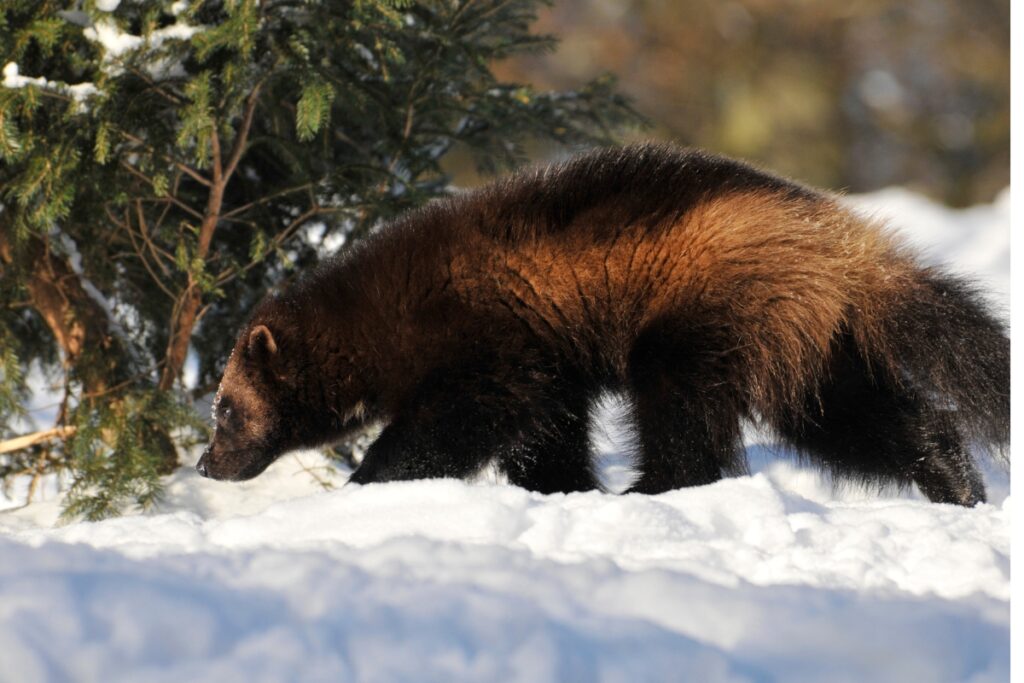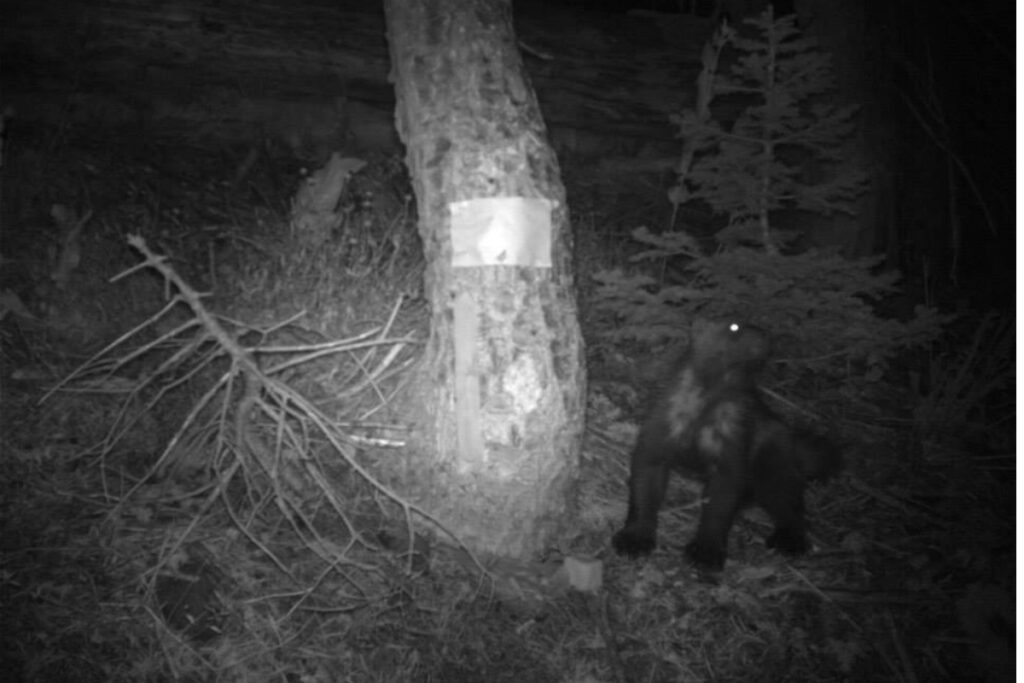
Wolverines are elusive, solitary creatures with a fierce reputation, making their homes in some of the harshest landscapes in North America. Once widespread across the continent, their numbers have drastically dwindled due to habitat loss and hunting. However, a few states still offer wolverines the rugged, snowy terrain they need to survive. Here are a few places you might still find these wild marvels.
1. Wyoming

Wyoming is home to one of the healthiest wolverine populations in the contiguous U.S., with an estimated 15 individuals. The state’s mountainous terrain provides a perfect sanctuary, especially in areas like Yellowstone. Wolverines are occasionally spotted roaming Wyoming’s rocky landscapes, hunting and foraging. Conservation protections allow them to thrive here, making the state a rare stronghold in the lower 48 for these incredible creatures.
2. Washington

The dense, snow-capped forests of Washington’s Cascade Mountains offer wolverines an ideal habitat. While difficult for researchers to access, these remote areas have become a crucial refuge for these secretive animals. An estimated 25 wolverines reside here, living their best life in harsh terrain that discourages human activity. Conservationists’ monitoring cameras occasionally catch fleeting images as the wolverines slip through the shadows.
3. Idaho

In Idaho, the rugged northern and eastern mountain ranges are prime wolverine territory. These animals dig deep snow dens here, where they store food and raise their young. Idaho’s wilderness provides both safety and solitude, which helps the species endure despite their low numbers. While sightings are rare due to their elusive habits, this state’s protected lands offer a sliver of hope for wolverines’ long-term survival.
4. Oregon

Oregon’s Wallowa Mountains are known habitats for wolverines, though they’ve increasingly been spotted venturing into lower elevations, too. With climate shifts impacting their mountain homes, wolverines have adapted by expanding their range. Conservationists in Oregon are watching closely, hopeful that the state’s abundant wilderness can continue to support wolverines even as they seek new paths and habitats in the face of changing conditions.
5. Montana

Montana’s western mountain corridors provide a critical passage for wolverines migrating between the U.S. and Canada. These animals are known to roam vast distances, and the expansive wilderness in Montana is ideal for their movements. Though ever-elusive, wolverines are sometimes spotted in these wild terrains, crossing high-altitude passes and dense forests. For these incredible travelers, Montana offers ample space to roam without the threat of human encroachment.
6. California

Wolverine sightings are exceedingly rare in California, with only two confirmed over the past century. However, in 2008, one was spotted in Yosemite National Park, likely seeking food or new territory. Conservationists have since held onto hope that the Sierra Nevada might eventually support a wolverine population again. California’s protection laws and vast, mountainous regions offer an inviting habitat if any wolverines decide to venture back into the state.
7. Utah

Utah saw an exciting sighting in 2022 when a wolverine was captured and fitted with a GPS tracker in the Uinta Mountains—a rare event, as the animals are extremely scarce here. The tracker allows researchers to follow its movements, a unique opportunity to learn about wolverine behavior in Utah. The rugged Uintas could offer the species a secure home, though experts remain cautious given the challenges facing wolverine populations.
8. Colorado

Colorado is on the edge of the wolverine’s current range, but its high, isolated peaks offer an ideal habitat should the animals decide to repopulate. Although sightings are infrequent, the state has made efforts to protect suitable alpine environments. If wolverines expand their territory, Colorado’s Rockies could serve as a promising sanctuary, adding to the diversity of wildlife already thriving in this state’s mountainous wilderness.
9. Nevada

Once part of the wolverine’s historical range, Nevada now rarely sees these creatures. An unconfirmed sighting in recent years sparked cautious optimism among wildlife experts, and laws protecting potential habitats have been implemented in case the species ever ventures back. For now, the sighting remains a mystery, though conservationists hope Nevada’s preserved landscapes might one day lure wolverines back to their former stronghold.
10. Minnesota

Though wolverines are not known to live in Minnesota, occasional sightings suggest they may visit from neighboring areas. The state’s boreal forests and cold winters provide the kind of environment wolverines prefer, making Minnesota a plausible part of their range. Conservation efforts in the state have helped preserve vast areas of forest, giving transient wolverines a safe passage and a potential habitat if they decide to settle.







